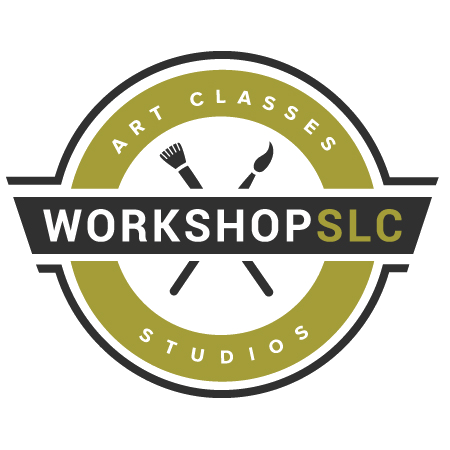Date: Thursday, April 10th - Sunday April 13th, 2025
Times: 9:00 am - 4:00 pm
Levels: All Levels
Cost: $695
Workshop Description
We will work together on still life composition, brush painting, and knife painting. Any skill level in painting is good, I enjoy adjusting my advice for each person’s level. However, more advanced students will find it easier to focus on the subtleties of composition. A solid drawing background is highly recommended.
Thursday morning:
Composition! I will work individually with each student to compose a still life setup. The goal will be to create compositions with a powerful sense of focus. This is an important stage and we will give it some thought. I also encourage students to listen to the composition problems faced by fellow students--it is a great way to learn and process. If you are finished earlier than others with your setup, you can begin setting out your paints.
The rest of Thursday:
After everyone has a good setup, I will explain my own composition and intentions, then I will begin a demo of my painting method and answer questions while I paint. The more questions the better. At some point I’ll stop and everyone will begin working on their own paintings and I will circulate to help each person.
Friday, Saturday, Sunday,:
You will paint and I will circulate. I will periodically come back to my demonstration. Halfway through the workshop, I will probably start another demonstration that is very different from the first. However, priority is given to your work time so that I can give you practical and specific advice. You may choose to create a new composition every day if you like, or you may dig in and get to a more finished stage. I love talking about composition, and the beginning stages are so important, so I encourage more starts. Frequent repetitions of beginning stages did wonders for me as a student.
Note: I would hope that you are not overly concerned with producing sellable work during the workshop as it can hinder learning. If you end up with something great, that is a bonus, but I don’t want students to feel rushed or obsessed with production. I am mostly concerned with communicating some key concepts in a way that really sinks in. I want this knowledge to be useful for you later on. We will work hard and enjoy the process together.
Supply List
-Several generous size black cloths AND white cloths (Unless explicitly provided by venue)
To use as your still life background/surface cloth (and to provide extra shade for your setup if necessary). This is an important step in the composition process. Any normal cotton cloth is great.
-Holbein MX no 1 painting knife or Holbein 1066S-303 painting knife. Both are excellent options. 303 is more affordable and just as good (a little smaller and more delicate). Another fantastic option is a hand-crafted Oakblade knife--he offers many shapes and varying flexibility.
https://www.artxpress.com/ccp10196-holbein-mx-series-painting-knife-mx1---flexible-2-hkmx1-hkmx1.htm
https://www.artxpress.com/ccp10501-holbein-painting-knife-1066-s-303-hk1066s-303-hk1066s-303.htm
https://oakblade.com (look for the DMD shapes–similar to holbein 1066S-303 and MX 1 but pointier)
If you have no intention of knife painting, you can stick with brushes. But I will be teaching both. I love both.
-Filbert Natural Bristle Brushes, a variety of sizes.
Good brands are Robert Simmons Signet filbert, Trekell Hog bristle filbert, Jack Richeson Signature. When painting with brushes I use the whole range, but my workhorse is usually size 4. To make things simple, you can just get some even numbers: 2,4,6,8....
-Solvent: Gamsol.
-Medium: Gamblin Neo-Megilp
-Paint list:
Be sure to avoid student grade brands (like winton etc): the oily/loose handling properties and weak pigmentation will hinder your ability to paint wet-into-wet. I like Winsor Newton Artist's Oils and Gamblin Artist Oil Colors and there are plenty of decent brands in that price range. If you'd like to experiment with a fast drying paint, I also enjoy W&N Griffin Alkyds.
ivory black
phthalo blue
ultramarine blue
alizarin crimson
cadmium red
cadmium orange
burnt umber
raw umber
yellow ochre
cadmium yellow
cadmium lemon
a quality white (I mostly use titanium white)
-A variety of toned panels to paint on. Some different sizes: 8x10, 9x12, 11x14, bigger if you like, maybe a square if you want. It is nice to have a choice while composing. I’ll do my demonstration on 9x12.
Good options are Ampersand Gessobord, Jack Richeson Premium Gessoed Hardboard, Raymar or Trekell linen panels, Artefex acm panels (allinpanel or oleopanels, my current favorite). Tone the panels in advance of the workshop to make sure they are totally dry. Can't go wrong with an umber color. Often I like to prep a few in different tones (one cooler, one warmer) and then make a game-time decision.
-Paper towels. I like Viva or those blue shop towels, both are thick and cloth-like.
-Your other basics...palette, container for gamsol, gloves, whatever else you need. Please contact venue for information about easels etc.






